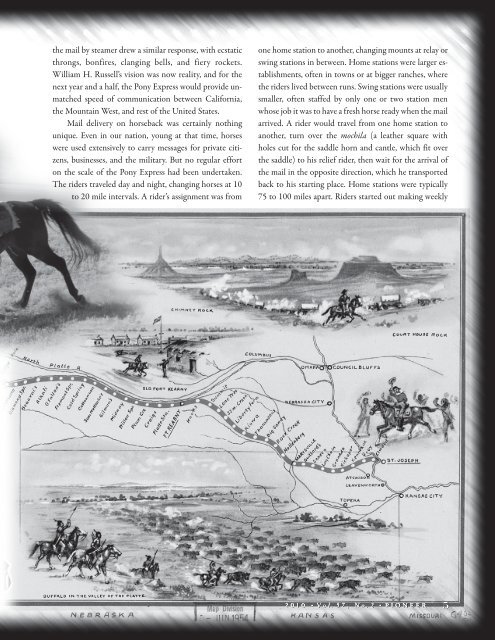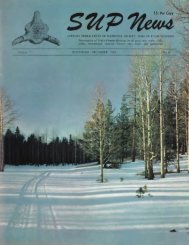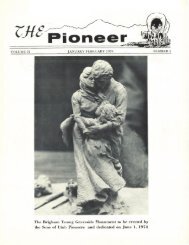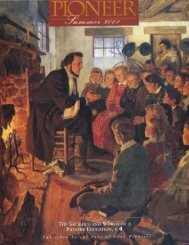Create successful ePaper yourself
Turn your PDF publications into a flip-book with our unique Google optimized e-Paper software.
the mail by steamer drew a similar response, with ecstatic<br />
throngs, bonfires, clanging bells, and fiery rockets.<br />
William H. Russell’s vision was now reality, and for the<br />
next year and a half, the Pony Express would provide unmatched<br />
speed of communication between California,<br />
the Mountain West, and rest of the United States.<br />
Mail delivery on horseback was certainly nothing<br />
unique. Even in our nation, young at that time, horses<br />
were used extensively to carry messages for private citizens,<br />
businesses, and the military. But no regular effort<br />
on the scale of the Pony Express had been undertaken.<br />
The riders traveled day and night, changing horses at 10<br />
to 20 mile intervals. A rider’s assignment was from<br />
one home station to another, changing mounts at relay or<br />
swing stations in between. Home stations were larger establishments,<br />
often in towns or at bigger ranches, where<br />
the riders lived between runs. Swing stations were usually<br />
smaller, often staffed by only one or two station men<br />
whose job it was to have a fresh horse ready when the mail<br />
arrived. A rider would travel from one home station to<br />
another, turn over the mochila (a leather square with<br />
holes cut for the saddle horn and cantle, which fit over<br />
the saddle) to his relief rider, then wait for the arrival of<br />
the mail in the opposite direction, which he transported<br />
back to his starting place. Home stations were typically<br />
75 to 100 miles apart. Riders started out making weekly<br />
<strong>2010</strong> Vol. 57, <strong>No.2</strong> PIONEER 5<br />
◆ ◆







